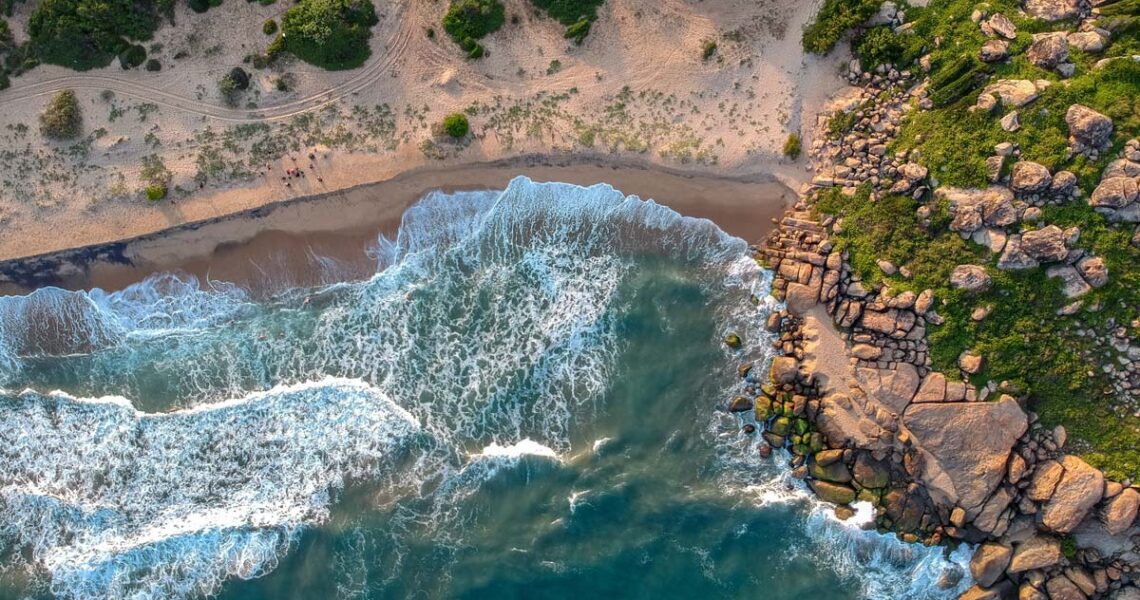Sri Lanka and it’s connection with India- digging the Ramayana times
Searching for the ancient roots is always an important journey. The connection of India and Sri Lanka have been immortalized in the Hindu epic Ramayana. There are many such evidences which proof the connection between these two diverse cultures. So today we will dig the ancient times and find out the relationship amongst these two diverse mythologies. Happy reading!!
Ramayana: The Hindu epic Ramayana clearly mentions about the Sri Lankan King Ravana who abducts Rama’s wife Sita. The routes mentioned are also exactly same as of today. The Kingdom of Kishkindha still stands in the Southern India today. Valmiki in Ramayana mentions a great sea which Hanuman leaps to find Sita in Lanka. This Lanka is the Sri Lanka of the present times. According to the text, Rama worshipped Lord Shiva in Rameshwaram before he travelled to Lanka. The Jotirlinga of Rameswaram still stands there. Besides the most remarkable example is the Ram Setu or the Adam’s bridge which have been found in the Indian Ocean. Research suggests that the Ram Setu cannot be a natural formation. It might be man made. According to legends, Rama Sethu was built by the monkey troops of Rama to cross the ocean and wage a war against Lanka. Recent excavations suggest that the Ram Setu is a foot walk bridge which might have been submerged after the recent tsunamis. Besides the Sri Lankan version of Ramayana also mentions Ravana the demon king and has temples in his name. Besides the mention of flying vehicles to reach India from Lanka and vice versa can be referred to the modern airplanes. All the ancient sources suggest that a demon king Ravana existed. Even during the Swayamvar of Sita, Ravana from Lanka comes to the ceremony. Many archaeological excavations both in Lanka and India have dig up the primal times and many such sculptures have been found. Moreover, Sri Lanka was established as an independent country only after the European colonialism. It was previously a part of various Indian kingdoms. The national dance of Lanka that is Kathakali is taken from the Ramayana and Indian traditions.
Buddhist texts: Not only Ramayana but also the Buddhist texts have considerable examples of the ancient connections between these two countries. The Buddhist version of Ramayana mentions that Buddha travelled to Lanka to meet Ravana. Here the progeny of Rakshashas are a civilized group of people and Buddha is also referred as a Rakshasha. The Kingdom of Ravana was quite civilized and mastered many celestial weapons. In Sri Lanka gilded statue of Boddhistava Tara have been found dating back to 6th century BC. The traditional Lankan Chronicles Dipavamsa suggest that Buddhism was taken to Lanka in the 4th century BCE by the sons of emperor Ashoka which is indicative of the fact that Sri Lanka and India were connected long time ago. Hinduism was established in Sri Lanka by the Tamils. According to geographical sources, all of them went to Sri Lanka by the Ram Setu which was the only foot way between these two cultures. Even according to Christianity, Adam travelled from the garden of Eden in heaven to India by this foot bridge. The national religion in Sri Lanka is mostly Hinduism and Buddhism. There are numerous Hindu temples and Buddhist monasteries in Sri Lanka which forms their Culture.
Other beliefs: According to certain archaeologists, the present day Sri Lanka is not same with the Lanka of the Ramayana times. Instead they suggest that Sonepur in Orissa is the Lanka mentioned in the Hindu epic Ramayana. Sonepur lies along the banks of the Tel, a torrential river which in 1975 had washed away a temple with tantric diagrams near Baidyanath, a temple constructed by Daripada, a raja of Sonepur who abdicated his throne to become a tantric. Archaeologists excavated a fort running for nearly two kms along the bank of the river. The scientists also discovered 12 pitchers dating back to the 6th or the 7th century B.C which were arranged in three layers. Even scientists have suggested literal dimensions in this as well. Many historians argue that Ravana’s country was called Tamraparm or Singhala and not Lanka. One of the copper plates found at Sonepur refers to Someshwar Deva, a prince calling himself the lord of Pashchim Lanka. Besides they also argue that Valmiki mentioned Lanka is close to the Mahendra Giri hill which is in the Ganjam district of Orissa. Historians further argue that the tribal community of Sonepur perform the ceremony Lanka Podi on the Pushaamavasya day. This day they burn the image of Hanuman in order to show Ravana’s antipathy for him. Orang and Gond tribes of Orissa sing folktales on Ravana and also claim to be his descendants. The Ramayana mentions the Sal tree which flourishes in Orissa, whereas one does not find any such tree in Sri Lanka. However, these may also suggest that Sri Lanka and India were one Culture during the ancient days.
Whatever may be the truth, both these countries were surely connected by an ancient root. They have their cultural backdrop in common. So stay connected with us. We will be back tomorrow with another article to stun you.
